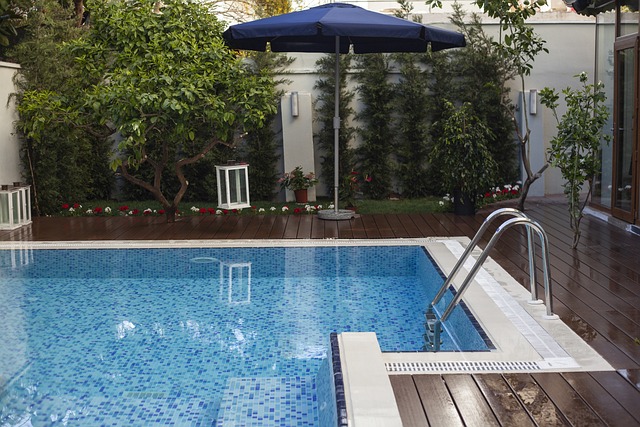Small Inground Pools: A Practical Guide for Compact Spaces
Small inground pools have become increasingly popular among homeowners with limited outdoor space. These compact aquatic features offer many of the benefits of traditional swimming pools while requiring less space and maintenance. Understanding the advantages and requirements of small inground pools can help homeowners make informed decisions about their outdoor living spaces.

Why Are Small Inground Pools Ideal for Compact Backyards?
Small inground pools typically measure between 10x20 feet and 16x32 feet, making them perfect for properties where space is at a premium. Unlike above-ground alternatives, these pools can be customized to fit irregular lot shapes and integrated seamlessly into existing landscape designs. They require less excavation work than full-sized pools, which means less disruption to your yard during installation.
The compact design allows homeowners to maintain green space for other outdoor activities while still enjoying pool ownership. Many small pools can fit in backyards as small as 1,200 square feet, leaving room for patios, gardens, and play areas. Additionally, these pools often comply more easily with local setback requirements and property line restrictions that might prohibit larger installations.
Understanding Small Inground Pool Installation Options
Several installation methods exist for small inground pools, each with distinct advantages. Fiberglass shells offer the quickest installation, typically completed within one to two weeks. These pre-manufactured units come in various shapes and sizes specifically designed for compact spaces.
Concrete pools provide maximum customization flexibility, allowing homeowners to create unique shapes that perfectly fit their available space. The construction process takes longer, usually six to eight weeks, but results in a completely personalized pool design.
Vinyl liner pools represent a middle-ground option, offering moderate customization with faster installation times than concrete. The vinyl material comes in numerous patterns and colors, and the supporting structure can be adapted to fit most compact yard configurations.
How Do Small Inground pools Benefit Families?
Families with children find small inground pools particularly advantageous for several reasons. The reduced water volume makes supervision easier, as parents can maintain visual contact with swimmers throughout the entire pool area. Shallow sections can be incorporated more effectively in compact designs, creating safe zones for younger children while still providing deeper areas for older family members.
Small pools encourage more frequent use due to their convenience and accessibility. Families often find themselves using compact pools more regularly than they would larger installations, as the intimate setting feels less overwhelming for casual swimming or relaxation. The reduced chemical requirements and faster heating times mean the pool can be swim-ready more quickly and maintained at comfortable temperatures more affordably.
What Maintenance Requirements Should You Expect?
Small inground pools require less maintenance effort than their larger counterparts due to reduced water volume and surface area. Daily skimming takes only a few minutes, and chemical balancing requires smaller quantities of treatment products. However, the reduced water volume also means that chemical imbalances can occur more rapidly, requiring more frequent testing and adjustment.
Filtration systems for small pools typically run shorter cycles while maintaining water clarity. Automatic pool cleaners designed for compact spaces can thoroughly clean the entire pool surface in 30 to 60 minutes. Weekly maintenance routines generally take 30 to 45 minutes, compared to one to two hours for standard-sized pools.
Seasonal maintenance tasks remain similar to larger pools but scaled down proportionally. Winterization requires fewer chemicals and less time, while spring opening procedures can often be completed in a single day.
Maximizing Small Pool Functionality
Creative design elements can significantly enhance the functionality of compact pool spaces. Multi-level designs incorporate shallow lounging areas alongside deeper swimming zones, effectively creating multiple use areas within limited square footage. Built-in seating and spa features maximize the pool’s utility without requiring additional space.
Strategic placement of water features like fountains or spillovers can create visual interest and make the pool appear larger than its actual dimensions. Infinity edges work particularly well in small pools, creating the illusion of expanded space while providing an upscale aesthetic.
Surrounding deck areas should be proportioned appropriately to avoid overwhelming the pool or creating cramped conditions. Vertical landscaping and privacy screens can define the pool area while maintaining an open, spacious feeling.
Modern small pool designs often incorporate technology features like LED lighting systems, automated chemical management, and smartphone-controlled heating and filtration systems. These additions enhance usability and maintenance convenience without requiring additional physical space.
Small inground pools represent an excellent solution for homeowners seeking pool ownership despite space limitations. Their compact design, reduced maintenance requirements, and family-friendly features make them practical alternatives to larger installations. With proper planning and design consideration, these pools can provide years of enjoyment while maximizing the potential of smaller outdoor spaces.




